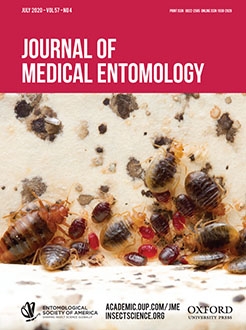A fine-toothed comb found in the Judean Desert and resembling an ancient louse comb was examined. Based on radiocarbon dating, it ranged between 1660 AD and 1950 AD. From the material accumulated between the teeth, an oribatid mite, a pseudoscorpion, exuviae of beetle larvae, a sucking louse (Polyplax brachyrrhyncha Cummings, 1915), as well as a fully engorged larva and a nymph of the ixodid tick Rhipicephalus turanicus Pomerantzev, 1936 were recorded. Additionally, the comb included numerous hairs of a spiny mouse (Acomys sp.). Although finding mites, beetle larvae, and a pseudoscorpion on a louse comb could be regarded as contamination, the findings of P. brachyrrhyncha, as well as of a larva and nymph of R. turanicus, are noteworthy. We hypothesize that the presence of animal lice and ticks could indicate some sort of pet grooming.
How to translate text using browser tools
4 February 2020
Polyplax brachyrrhyncha (Anoplura: Polyplacidae) and Rhipicephalus turanicus (Ixodidae: Rhipicephalinae) in an Ancient Louse Comb
Kosta Y. Mumcuoglu,
Naama Sukenik,
Guy Bar-Oz
ACCESS THE FULL ARTICLE
It is not available for individual sale.
This article is only available to subscribers.
It is not available for individual sale.
It is not available for individual sale.

Journal of Medical Entomology
Vol. 57 • No. 4
July 2020
Vol. 57 • No. 4
July 2020
Acomys sp.
louse comb
Polyplax brachyrrhyncha
Rhipicephalus turanicus




